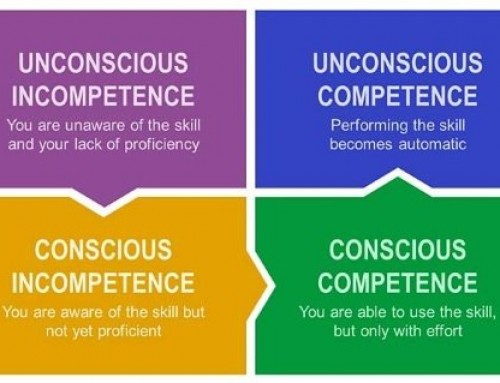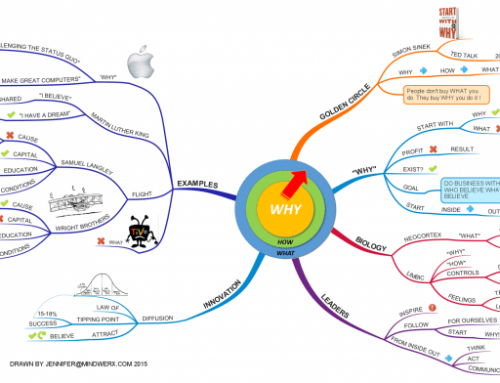If you are studying an innovation, then it already exists, which means you are looking into the past. This is interesting, and we can certainly learn much from this effort. But by its nature the next innovation lies in the future, it is unseen and unknown today. You may be able to predict where an innovation is needed or likely to occur, but you will only see the innovation when it happens.
Therefore innovation would be simple, if only we had a crystal ball – but we don’t, at least not a very clear or accurate one. So if you want to be more innovative, if innovation truly is needed for your success, you are better off NOT studying innovation (i.e. the past) but the things that must be done to achieve success through innovation. That is Focus, Creativity and Entre(Intra)preneurship.
Focus provides you with the direction you want to move in, and the ‘why’ for the effort needed. Creativity is the spark to starting ideas, concepts, inventions, perception shifts, or breakthroughs that really get things going. Entrepreneurship is the hard work that, if successful, turns these into reality – i.e. the acknowledged innovation.
For an innovation to occur there is almost always a need to start the process off, even if that need is not always obvious. These challenges and opportunities are sometimes clearly visible, but on occasion they arise almost without notice. In either case they are incredibly valuable to us in directing our innovation efforts, in a way they can help us ‘predict’ where the next innovation will be, although seldom what it will be.
For example, right now the world is facing some seemingly insurmountable challenges – climate change, terrorism, radicalism, tribalism, asylum seekers, and currently the more arising challenge of Ebola, and there are many more. Given the significance of these, and the clear lack of easy solutions, it is fair to assume that innovation will be required to solve or at least positively impact these challenges. But we will only know what that innovation is when it materializes.
An example of this from the past is the fight against Polio in the 1950s, when an innovative business model was needed to drive the medical research, and an innovative funding model (The March of Dimes) was created to bring in the funds to do that work. Then in the 1980s Rotary International began the End Polio Now program that saw Polio reduced from over 40 countries to less than a handful. And the program continues today, because about $1.5B is needed each year just to keep Polio from rising again, with its devastating crippling effect, particularly on children.
Creativity is both a natural attribute, some people are naturally more creative than others in many different ways, AND a skill that can be developed and applied deliberately. Because we cannot ‘control’ natural creativity, we might instead find ways to let it flourish and perhaps point it in directions that would be useful to explore.
In addition, the study and practice of critical and creative thinking methods, techniques and tools can give individuals the skills needed to have creativity on demand – a significant advantage when seeking to be more innovative. This one action, the development of people’s thinking skills, can significantly increase the wherewithal of an organisation to be more successful – it essentially increases the intellectual capital of the business.
Similarly entrepreneurship, whether done by small start-ups or internally in global organisations, is both a natural attribute that some people display more than others, and a skillset than can be learnt and improved. Having a great idea, a wonderful invention (with patents), or a fabulous new business strategy is not enough to ensure success.
The ‘study’ of many past innovations has demonstrated that a great invention or clever idea only reached innovation status when it was successfully adopted or implemented. Think of the Post-it Note story, or even Bubble Wrap that started out as wallpaper (not very successfully), and only years later did someone think it might be used as excellent lightweight packing material. The world is full of great ideas, strategies, and inventions that require entrepreneurial creativity to become innovations.
Leading Innovation
To be more successful through innovation, organisational leaders need to stop just studying and talking about creativity and innovation, and start learning how to lead innovation. That is they need to learn about and apply the principles and methods of Focus, Creativity, and Entrepreneurship, and then lead positive action so these ingredients combine to result in Innovation.
To start the learning process it is helpful to see how these terms are defined, and to try to see what innovation looks like, how it happened, and why it is so hard to predict and achieve. Understanding the nature of creativity and entrepreneurship is important, as is the commitment of time to developing the skills needed to lead innovation.
Appreciating the attributes of people who are naturally creative and have an entrepreneurial flair is valuable, so we can learn from their success. But more importantly leaders need to develop the skills of critical and creative thinking and entrepreneurship, and see how the effective ‘management’ and application of proven methods has helped all sorts of people, with and without natural abilities be more successful.
Leading innovation is about looking at and applying what is NEEDED to create a focused opportunity seeking culture in your organisation, and gaining the insights, tools and training to not leave innovation to chance, but to instead embrace change so innovation can be realized.
If Innovation truly is needed for your success, the only real question is ‘are you ready, willing and able to step up and lead it?’ The ball, as they say, is in your court!







Leave A Comment
You must be logged in to post a comment.